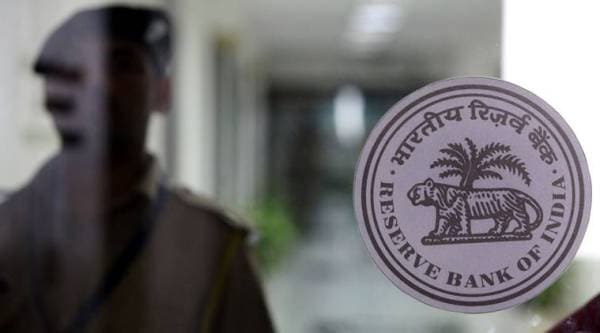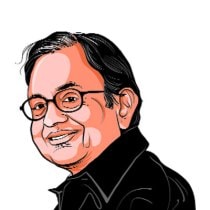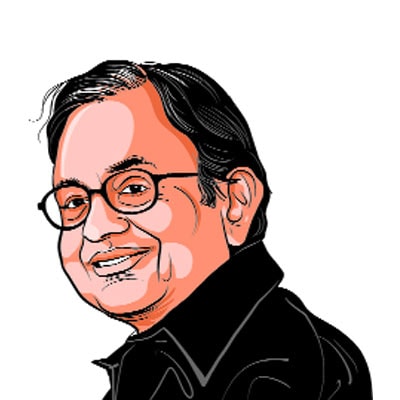Across the Aisle: The day of reckoning
The sensible course for the government and the RBI is to put aside the issue of reserves and focus on the immediate concerns.

There is too much at stake in the governance of the country for the government and the central bank to have their daggers perpetually drawn. (Express photo by Pradip Das)
A perceptive writer has pointed out that the government and the central bank are a team in a three-legged race; they either run together or fall down.
Growth and price stability — two unexceptionable objectives of an economy — may sometimes come into conflict: when inflation is high or rising and the growth rate is low or sliding; or when the growth rate is too robust and threatens to push up inflation. The Finance Minister (government) and the Governor (central bank) will take their respective positions; they will meet; each will convey his/her concerns to the other; and things will be smoothened. There is too much at stake in the governance of the country for the government and the central bank to have their daggers perpetually drawn.
Nothing like what we see today, however, has happened before. Never before has a Deputy Governor, encouraged by the Governor to ‘explore’ the idea of central bank independence, delivered a public lecture to warn the government that it will incur the wrath of the markets. Never before has a Finance Minister retorted through another public lecture that the RBI was looking away when banks indulged in indiscriminate lending. Never before has a Secretary, Economic Affairs, gloated over a temporary bump in the market and mocked the Deputy Governor for his dire warning.
EYEING THE RESERVES
The trigger was the unprecedented invocation of Section 7 of the RBI Act, virtually commanding the Governor to ‘consult’ with the government on certain issues of ‘public interest’. The issues listed by the government were a smokescreen. Providing greater liquidity to stressed NBFCs, relaxing the rigour of Prompt Corrective Action with respect to 11 public sector banks, and a special window for providing credit to MSMEs were not such intractable matters that the Finance Minister and the Governor could not sit across the table and resolve them. The real issue lay behind the smokescreen — the reserves of the RBI.
The RBI’s reserves as on March 31, 2018 were:
1. Currency & Gold Revaluation Reserve: Rs 6,91,641 crore
2. Contingency Fund: Rs 2,31,211 crore
3. Asset Development Fund: Rs 22,811 crore
4. Investment Revaluation Account: Rs 13,285 crore
5. Foreign Exchange Forward Contracts Valuation Account: Rs 3,262 crore
6. Capital Reserve: Rs 6,500 crore
2. Contingency Fund: Rs 2,31,211 crore
3. Asset Development Fund: Rs 22,811 crore
4. Investment Revaluation Account: Rs 13,285 crore
5. Foreign Exchange Forward Contracts Valuation Account: Rs 3,262 crore
6. Capital Reserve: Rs 6,500 crore
Total: Rs 9,68,710 crore
Serial numbers 1, 4 and 5 will fluctuate depending upon the exchange rate and the interest rate. The other three were reserves built up over the years by putting away a large part of the annual surplus of the RBI. The annual surplus of the RBI has been a bone of contention between the government and the RBI. Dr Y V Reddy was loath to transfer the entire annual surplus to the government. Dr Raghuram Rajan resolved the issue and, beginning 2013-14, the entire annual surplus has been transferred to the government. Hence, nothing will be added to the reserves in the future from the annual surplus (although how the annual surplus is calculated could be a contested issue).
QUESTIONS, NO ANSWERS
The government seems to think that the accumulated reserves are too high. In proportion to the total assets of the RBI it is 26.8 per cent as against an average of 14 per cent for the central banks that were studied. The government is eyeing at least one-third of the reserves — approximately Rs 3,20,000 crore. That sum, incidentally, resembles the sum that the government hoped to realise as a windfall out of demonetisation!
The government has a weak case and is unwilling to answer the following questions:
1. Since 2013-14, the entire annual surplus has been transferred to the government. Why is the government re-opening an issue that has been settled?
2. There is no accepted international norm regarding the optimal size of the reserves (in proportion to assets). Why does the government think that 26 per cent is too high?
3. Further, is the situation in India (exchange rate volatility, inflation, capital flows) comparable to the situation in the countries that were studied?
4. Has the government examined Section 47 of the RBI Act that reads “the balance of the profits shall be paid to the Central Government”?
5. Since the government has claimed that its fiscal math for 2018-19 is correct and it is on course to achieve the fiscal deficit target, why does the government need the money this year?
6. What was the government doing in the last four years and six months and what is the tearing hurry to “fix the economic capital framework of the RBI” toward the end of its term? Should not the issue be left to the next government?
2. There is no accepted international norm regarding the optimal size of the reserves (in proportion to assets). Why does the government think that 26 per cent is too high?
3. Further, is the situation in India (exchange rate volatility, inflation, capital flows) comparable to the situation in the countries that were studied?
4. Has the government examined Section 47 of the RBI Act that reads “the balance of the profits shall be paid to the Central Government”?
5. Since the government has claimed that its fiscal math for 2018-19 is correct and it is on course to achieve the fiscal deficit target, why does the government need the money this year?
6. What was the government doing in the last four years and six months and what is the tearing hurry to “fix the economic capital framework of the RBI” toward the end of its term? Should not the issue be left to the next government?
FIXING WHAT’S NOT BROKE
The sensible course for the government and the RBI is to put aside the issue of reserves and focus on the immediate concerns. It is not difficult for both to agree on a course of action concerning liquidity for NBFCs, revision of PCA norms, forbearance in the case of selected sectors (like power) burdened by NPAs, generous credit to MSMEs, etc. Each one is simply a matter of numbers and finding optimal solutions.
However, if the government is intent on ‘fixing’ the capital framework of the RBI, then its motives are dishonest. The inescapable conclusion will be that the government’s aim is to force Dr Urjit Patel to resign, appoint a pliant Governor, and convert the RBI into a conventional Board-managed company. That is why I had said that November 19 will be a day of reckoning for central bank independence and the Indian economy.
For all the latest Opinion News, download Indian Express App
More From P Chidambaram
- Across the Aisle: Those who are left behindAs long as Sardar Patel lived, he did not forgive the fanatics who killed Mahatma Gandhi (as Home Minister he had banned the RSS for…
- Across the Aisle: Power lies in non-useThe government’s initial concern was only about interest rates but, on that issue, Dr Urjit Patel was on a strong wicket — he had the…
- Across the Aisle: Things fall apart; the Centre cannot holdThere is an old saying ‘Misfortunes don’t come singly’. It seems that the gods are not smiling on the Indian economy...







































No hay comentarios:
Publicar un comentario